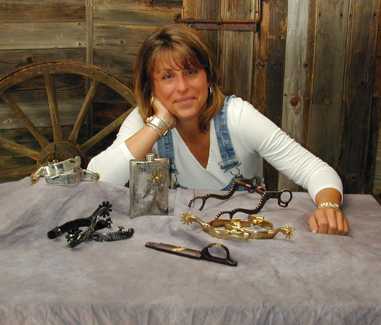

About Scrimshaw


About Scrimshaw
The ancient art of scrimshaw consists of thousands upon thousands of needle-like dots or scratches which form an intricate and delicate beauty of it's own, artistically placed on materials such as ivory, teeth, bone, tusks, horn, shells, plastics and even include the most delicate materials as an "Ostrich Egg". The designs, executed by whale fishermen of American and Anglo-American origin, were carved with either a jackknife or a sail needle and then etched in black. Among the subjects were whaling scenes, whaling ships, naval action, frigates, brigs, sailor's sweethearts, bouquets of flowers, Masonic emblems, coats of arms, and the Irish harp. Examples date from the late 17th century, but the craft reached it's peak during the years of 1830 to 1850.
About the Artist
Elizabeth is one of those rare Wyoming natives born into a century old craft of scrimshaw which was first done by early whalers and Eskimos. Elizabeth was first introduced to the art of scrimshaw and also the intricate layout and patience of metal engraving by a dear friend, Guiseppe Forte, a master metal engraver. Obvious talent in the abilities to learn this art led Elizabeth to enroll at Trinidad State College, a N.R.A. gunsmithing and law enforcement armorer school in Colorado. Her studies included the supervision of another master, Sam Welsh, who specialized in custom metal engraving and scrimshaw. Elizabeth continues to study with master engravers to enhance her skills in the art and has been featured as one of the top scrimshanders across the country. Her work has been published in popular gun magazines and Knives "94" and Knives "95" publications.
About Orders
Please email or phone me with a description of what you want done. We can take care
of price and payment arrangements then. Photos of things you want scrimmed or
engraved can be sent by post or digitally through email.
Home Misc.Knives Guns Buckles Motorcycle Tack Framed Pieces Links